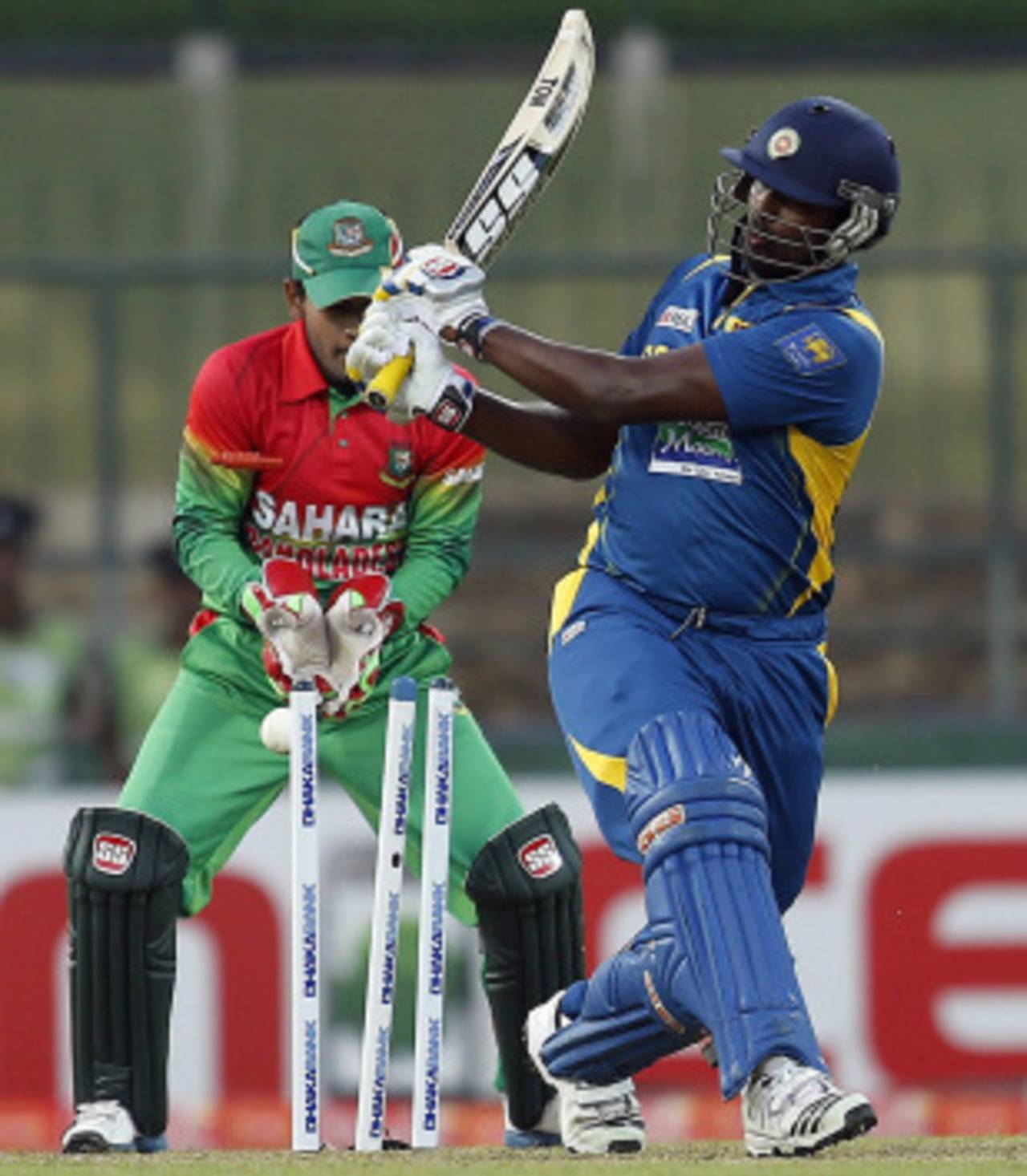A favourite criticism of schoolteachers, theatre critics and literary aficionados is that too much writing has "a beginning, a muddle and an end". After losing their first ever ODI at home to Bangladesh, Sri Lanka may reflect on the components of their team, and feel they too are guilty of confusing upheaval near the centre.
On paper, it would seem Sri Lanka are one of the most versatile ODI teams in the world. The XI that played Bangladesh on Thursday featured six bowlers capable of consistently filling their ten-over quota, as well as Tillakaratne Dilshan, who has lately been much better than just a part-timer. There are seven batsmen, and three capable hitters to follow - never have Sri Lanka fielded sides that bat as deep as their limited-overs teams in the last eight months. And their XI even boasts three of the best wicketkeepers in the country, and another, in Dilshan, who has done admirable service as a makeshift gloveman in the past.
The qualities of the three allrounders largely responsible for this wealth of options also appear ideally suited to the requirements of the side. In Angelo Mathews, Thisara Perera and Jeevan Mendis, Sri Lanka have a batting allrounder who is a steady seam option, a bowling allrounder, whose biff is unrivalled in the team, and a legspinning allrounder who specialises in the tackling of spin bowling - a skill the remainder of Sri Lanka's lower middle order are yet to master with reassuring competence.
Yet somehow, through both strategic blunders and a collective failure to perform, on Thursday, Sri Lanka seemed short of at least one quality finisher, a death bowler of heft, and an accurate spinner to rein in rampant batsmen after the Powerplays.
At Sangakkara's fall in the 36th over, Sri Lanka were 203 for 2, and were eyeing a target well in excess of 300. Mathews promoted Perera, then himself, then Jeevan Mendis ahead of the typically more sedate pair of Dinesh Chandimal and Lahiru Thirimanne, in order to spur the death-over dash. Between them, the allrounders chewed up 24 deliveries for only 15 - a significantly slower run rate than every other batsman in the match, apart from the three men who were out for ducks.
Their inertia would be justifiable - even advisable, given the conditions - had any one of them come good, and flourished until the end. Yet despite having all been picked as men who should close out an innings and having strode into a favourable match situation, they displayed none of the patience, responsibility or nous required of a fine finisher.
Perera's strongest scoring area may be over midwicket, but he is too clever a cricketer to be heaving across the line at a ball pitched so close to him, at speed. A lofted shot down the ground, or a shuffle forward to change the length might have been more appropriate. Jeevan Mendis played the sweep almost exclusively when he arrived, and though he paddled one reverse shot to the fence, he largely played and missed at full deliveries. Mathews has seen his side home in spectacular fashion in the past, but his consistency is not far from being questioned, and his advancing swing to Abdur Razzak, who bowled flat and fast, was sign of baffled brashness. From 203 for 1, Sri Lanka surrendered five wickets for 35 in eight overs, and allowed the visitors a foothold in the match.
"We were about 200 for two, but after that we were a little too hurried with the bat," Mathews admitted after the game. "Especially the middle order. Our aim was to get a lot more than 300 runs, and that's why Thisara Perera and I went in before guys like Chandimal and Thirimanne. I think we had a bit of a setback there, but the idea had been to get the maximum amount of runs possible."
Mathews insisted the bigger blame for the loss belonged with the bowlers, and perhaps he has a point, but he can hardly claim to have exhausted the resources at his disposal, in pursuit of the win. The Bangladesh spinners were far more comfortable on the surface than their seam bowlers, yet only Sachithra Senanayake was used out of the three slow-bowling options available to him. Mathews said his reluctance to try Mendis was because the ball was too slippery for spinners after the rain, but that argument holds far less water than the Pallekele turf. Senanayake was Sri Lanka's most economical bowler, both before and after the rain break, as well as one of their most penetrative. If Mendis was deemed unsuitable because legsbreaks are more difficult to control in the wet, Dilshan's steady offspin is unlikely to have been so susceptible to moisture on the ball. Instead, Sri Lanka stayed with Nuwan Kulasekara, who had had a poor run since his second over.
The match was also the seventh consecutive limited-overs encounter in which Mendis did not deliver a ball. He has in the past been a useful cricketer for Sri Lanka in the ODI side, but he can hardly justify a place as a specialist batsman, if his captains are so unwilling to bowl him.
Sri Lanka's next ODI assignment is the Champions Trophy in June, and Mathews said his side had plenty to improve on before they launch their campaign in a major tournament. A more considered turn from his allrounders and a clearer, more flexible strategy on marshaling resources may be a major step to ensuring Sri Lanka maintain their impressive run at global events.
Andrew Fidel Fernando is ESPNcricinfo's Sri Lanka correspondent. He tweets here
